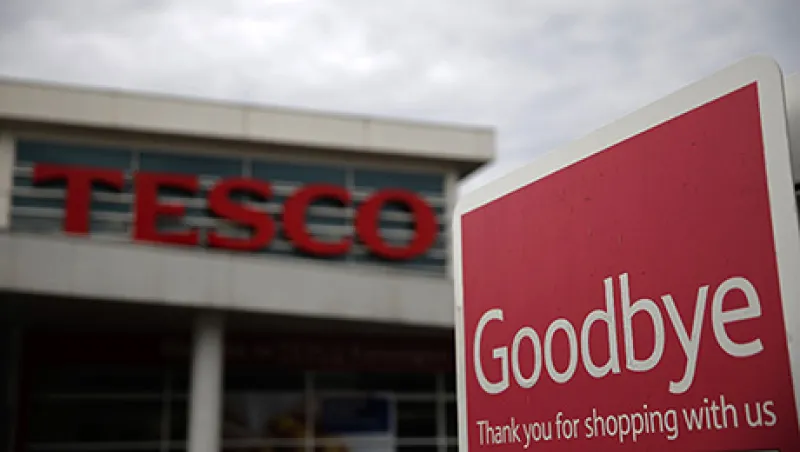
A "Goodbye" sign stands outside the entrance to a Tesco supermarket store, operated by Tesco Plc, in the Kennington district of London, U.K., on Thursday, Sept. 25, 2014. Tesco may be reduced by more than one credit level, taking it into speculative grade, if the findings of a probe into the accounting errors prompt the ratings company to lower its assessment of Tesco's management and governance to "weak," Standard & Poor's said yesterday. Photographer: Matthew Lloyd/Bloomberg
Matthew Lloyd/Bloomberg

